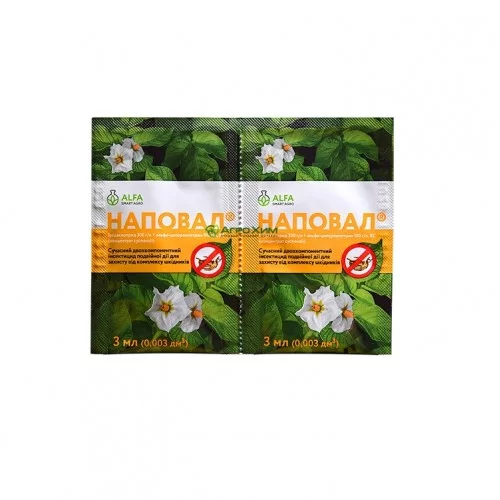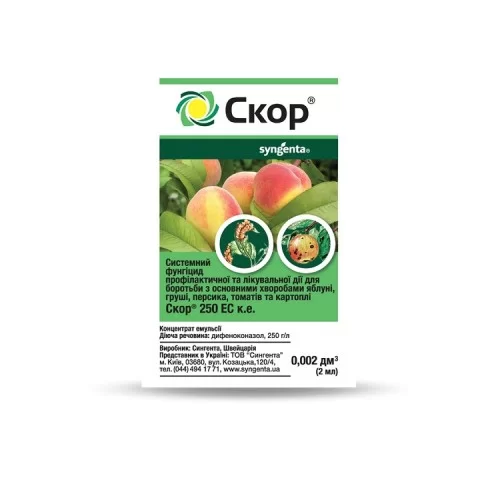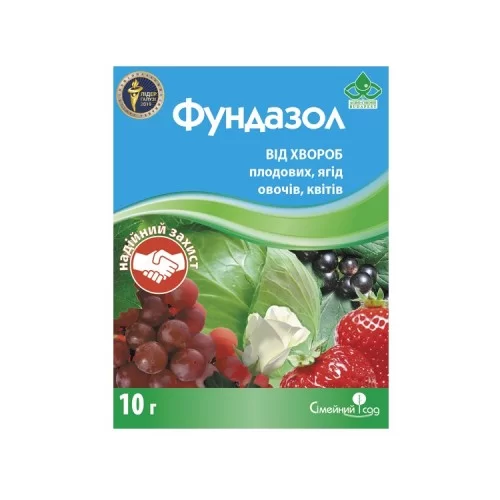Active ingredient: Imidacloprid, 300 g/l + Alpha-cypermethrin, 100 g/l
Method of application and consumption rates
| Culture | Pest | Consumption rate | Processing features |
| Potatoes, tomatoes | Colorado potato beetle, potato moth, scoops, thrips, aphids, bedbugs, certain types of mites | 3 ml per 8-10 liters of water | spraying during the growing season |
| Onion, garlic | tobacco thrips, onion fly | 3 ml per 8-10 liters of water | spraying during the growing season |
| Cabbage | whitefly, aphid, mealybug, cabbage fly | 3 ml per 8-10 liters of water | spraying during the growing season |
| Apple tree, pear tree | kidney weevil, apple blossom beetle, bullfrog, gooseberry, apple sawfly, pear bug, certain types of mites | 3 ml per 8-10 liters of water | spraying before and after flowering |
| Beet | beetroot scoop, aphids, thrips | 3 ml per 8-10 liters of water | spraying during the growing season |
advantages
- Lack of resistance in pests due to the combination of two active ingredients with fundamentally different mechanisms of action.
- Combining a quick "knockdown effect" with long-lasting protection.
- Highly active against the vast majority of insect pests
properties
The combination of two active ingredients with fundamentally different mechanisms of action provides high efficiency against pest populations resistant to traditional insecticides, and against the absolute majority of phytophagous insects. Napoval has contact and systemic properties, provides rapid action and guarantees a long period of protective action. In the plant, imidacloprid is converted into a natural antidepressant, which provides additional resistance to adverse weather conditions.
The application is independent of ambient temperature.
- Reliably protects young shoots and leaves that grow back after treatment due to its highly pronounced systemic effect.
- Additional anti-stress protection.
- Lack of phytotoxicity.
- Low consumption rate.
- Safety for plants, consumers and the environment.




